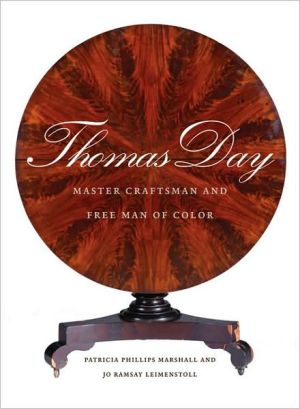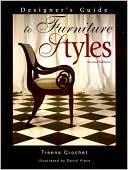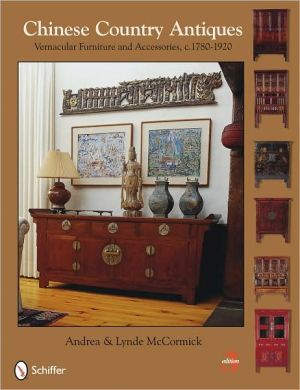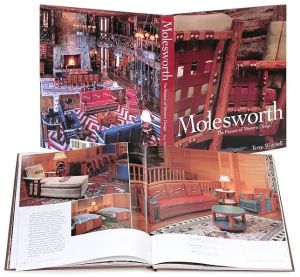Thomas Day: Master Craftsman and Free Man of Color
Thomas Day (1801-61), a free man of color from Milton, North Carolina, became the most successful cabinetmaker in North Carolina—white or black—during a time when most blacks were enslaved and free blacks were restricted in their movements and activities. His surviving furniture and architectural woodwork still represent the best of nineteenth-century craftsmanship and aesthetics.\ Patricia Phillips Marshall and Jo Ramsay Leimenstoll show how Day plotted a carefully charted course for success...
Search in google:
Thomas Day (1801-61), a free man of color from Milton, N.C., became the most successful cabinetmaker in North Carolina--white or black--during a time when most blacks were enslaved and free blacks were restricted in their movements and activities. This beautifully illustrated book provides information on Day's life and career and features more than 160 pieces of furniture and architectural woodwork that he produced for 80 structures between 1835 and 1861. Oversized, with 20 color and 239 b&w photos.Library JournalIn an era during which the majority of African descendants living in North Carolina were enslaved, Thomas Day, a "free man of color," became a wealthy and prominent furniture designer. Day's incredible story is exhaustively researched and deftly illustrated with his distinctive pieces from 1835 to 1860. The beautifully crafted furnishings featured throughout the book leave little room to deny that he was an industry innovator and pioneer. His ability to build a successful business in spite of many competitors and racial oppression is as compelling as his handiwork. Though Day's business eventually suffered because of a declining economy and backlash toward free blacks, he left a rich body of work. Marshall (curator of decorative arts, North Carolina Museum of History) and Leimenstoll (interior architecture, Univ. of North Carolina at Greensboro) provide a fascinating study of both the entrepreneur and his craft. VERDICT This book well serves the scholar and casual reader. Students of architectural designs can find inspiration in Day's timeless motifs, and historians researching Day and the social politics of the time are given ample information. Browsers will also be drawn to the eye-catching photographs and engrossing text. Highly recommended.—Ajoke Kokodoko, Oakland P.L.
Foreword Jeffrey J. Crow Crow, Jeffrey J.Introduction 1Chapter One A Cabinetmaker by Trade 9Chapter Two A Good and Valuable Citizen 19Chapter Three Opportunities for an Industrious Man 45Chapter Four Unavoidable Encumbrances, Gratifying Accomplishments 61Chapter Five An Assortment of Fine and Fashionable Furniture 75Chapter Six Bold and Expressive Architectural Woodwork 131Epilogue An Enduring Legacy 189Appendix A John Day Sr. Estate Papers 195Appendix B Petition from the citizens of Milton on behalf of Thomas Day, 1830 199Notes 201Bibliography 255Acknowledgments 267Index 273
\ From the Publisher"An excellent book about the craftsman's remarkable life. Building upon decades of research, the authors have produced the most comprehensive publication on this figure to date. . . . The photographs . . . are abundant and of high quality."\ -American Craft\ "Comprehensively researched and delightfully written. . . . The authors successfully advance the body of knowledge of free African American craftsmen in the antebellum period, while painting a vibrant image of the world in which Thomas Day operated. . . . Will be indispensable for all collections that focus on art history and the decorative arts, African American history, the antebellum era, and regional collections. . . . Essential."\ -Choice\ "Exhaustively researched . . . with . . . gorgeous full-color photographs of more than 160 pieces of furniture and architectural woodwork that Day produced between 1835 and 1861."\ -Raleigh News & Observer\ "Give[s] hints of the artisan's hidden inner life. [Day] came across as subservient in his newspaper ads, promising that commissions 'will be thankfully received and punctually attended to.' But he sent his children to an abolitionist boarding school in Massachusetts and wrote them that he longed to leave 'the Oppressive South.'"\ -The New York Times\ "This beautifully-illustrated book offers exceptionally skillful and sensitive readings of the artifactual and textual evidence. It is recommended for academic libraries, museums and large public libraries, and for all collections that support programs in African American studies and American cultural history more generally."\ -Art Libraries Society of North America\ "This fascinating study explores the vital legacy of Thomas Day. . . .The authors have produced a highly detailed−and highly readable−study of Day's career."\ -The Magazine Antiques\ "This long-awaited book . . . is the first significant scholarly examination of Day and his work. . . . The product of decades of research. . . . Is a foundation on which future scholars can build the often-forgotten story of North Carolina's free black community, and it is also a call to scholars in other states, North and South, to search out similar stories that puncture the myth of a monolithic antebellum society."\ -North Carolina Historical Review\ "Thomas Day is to be lauded as a significant achievement in scholarship on free black artisans of the South."\ -Journal of Southern History\ "Day's incredible story is exhaustively researched and deftly illustrated. . . . A fascinating study of both the entrepreneur and his craft. . . . [With] eye-catching photographs and engrossing text. Highly recommended."\ -Library Journal\ \ \ \ \ \ Library JournalIn an era during which the majority of African descendants living in North Carolina were enslaved, Thomas Day, a "free man of color," became a wealthy and prominent furniture designer. Day's incredible story is exhaustively researched and deftly illustrated with his distinctive pieces from 1835 to 1860. The beautifully crafted furnishings featured throughout the book leave little room to deny that he was an industry innovator and pioneer. His ability to build a successful business in spite of many competitors and racial oppression is as compelling as his handiwork. Though Day's business eventually suffered because of a declining economy and backlash toward free blacks, he left a rich body of work. Marshall (curator of decorative arts, North Carolina Museum of History) and Leimenstoll (interior architecture, Univ. of North Carolina at Greensboro) provide a fascinating study of both the entrepreneur and his craft. VERDICT This book well serves the scholar and casual reader. Students of architectural designs can find inspiration in Day's timeless motifs, and historians researching Day and the social politics of the time are given ample information. Browsers will also be drawn to the eye-catching photographs and engrossing text. Highly recommended.—Ajoke Kokodoko, Oakland P.L.\ \






